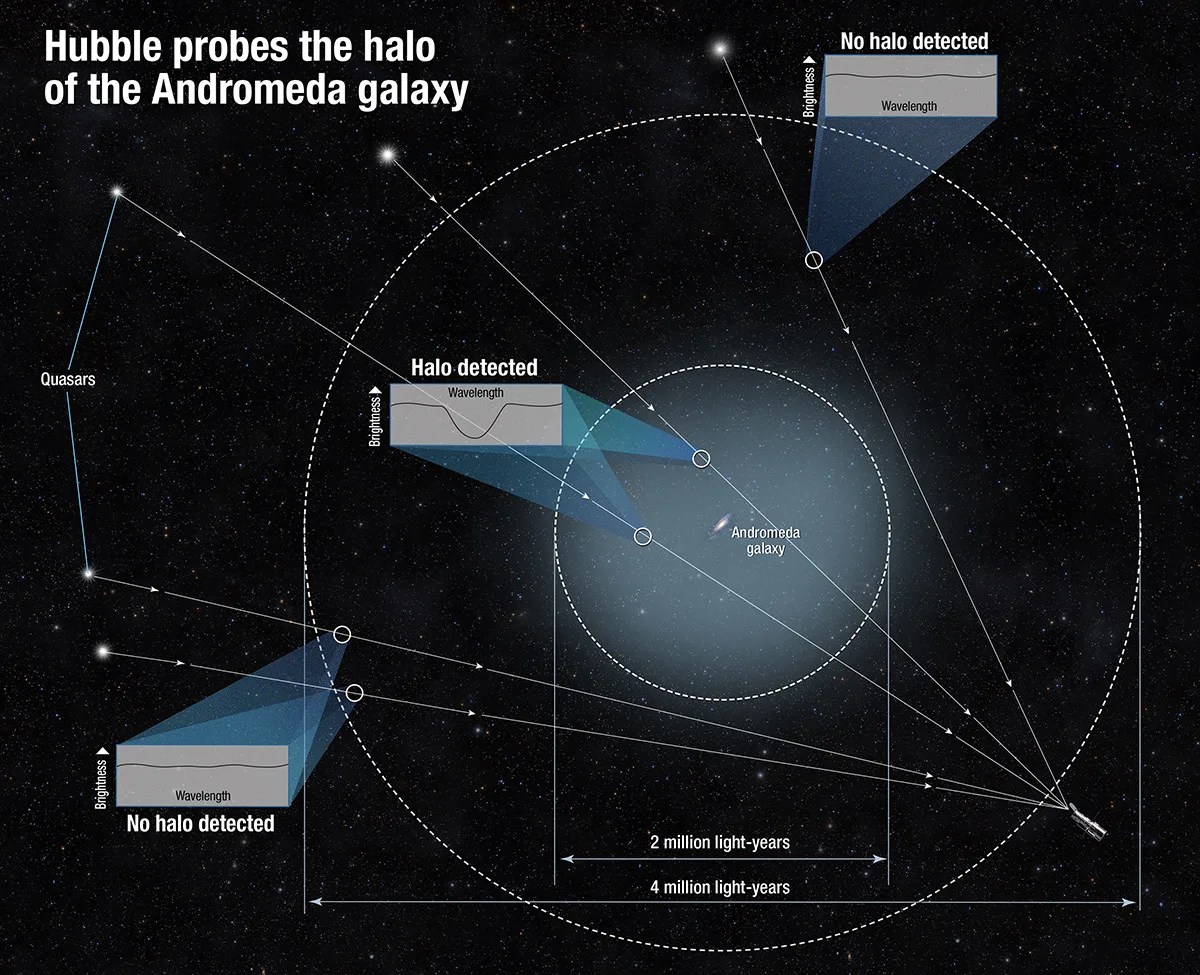
Andromeda Halo Graphic
The immense halo of gas enveloping the Andromeda galaxy, our nearest massive galactic neighbor, is about six times larger and 1,000 times more massive than previously measured.
Credits: NASA/STScI
Image CreditNASA/STScI
Size640x520px
